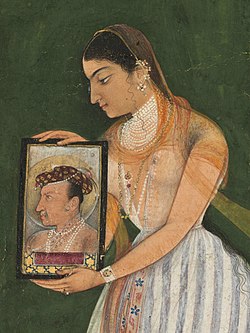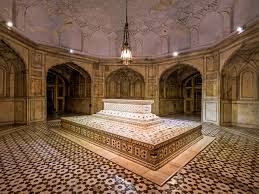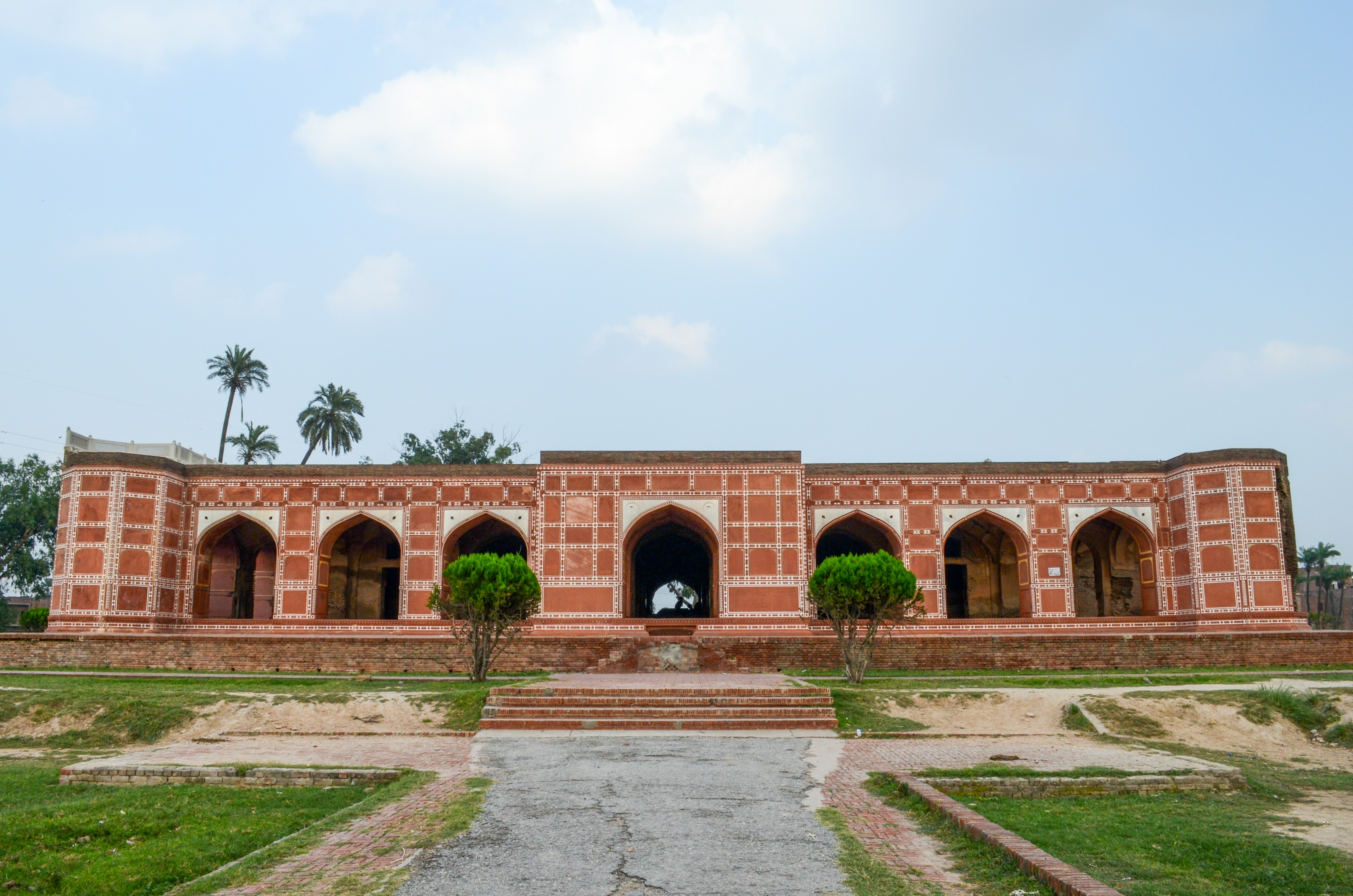Source : Google painting of Nur Jahan
Synopsis : There have been many illustrious women in the history of India about whom we were taught when we were kids because they were extraordinary women who created history hundreds of years ago. But unfortunately their final resting places did not receive the same attention and care they deserved. The story of Nur Jahan is unique because she was the only queen in the history of the Mughal empire who was called Badshah Begum meaning someone as important as the Emperor himself.
I have just published a blog called Incredible Razia who was the one and only female ruler to sit on the throne of Delhi Sultanate in 1236 but her reign was short because she faced a host of enemies who in 1236 could not accept a woman to rule over them. Razia Sultan was way ahead of her time when the orthodox Muslims could not accept her because she was audacious, just and a very able ruler who called herself Sultan and not Sultana, who did not veil herself and who fought like men in the war.
Today I will bring to you the story of the most powerful Mughal Royal woman in the history of centuries of Mughal rule in India called Nur Jahan or the Light of the World. She was extraordinarily beautiful and talented woman who was well educated and became the power behind the throne of Jehangir. The world does not know much about the Mughals let alone Nur Jehan because all they know is Taj Mahal that was built by Emperor Shah Jehan for his wife Mumtajmahal in Agra but the Mughals ruled India for many centuries starting with Babur and ending with the last Mughal emperor Bahadur Shah Jafar whom the British deposed after the first freedom struggle of 1857.
I will not get into the long story of Mughal rule in India here but focus on one extraordinary royal woman who made a place for herself in the history book by her sheer acumen, ability in political matters and her personality. Every Indian child knows about her place in the Indian history.
Biography of Nur Jahan :
Nur Jahan (born Mehr-un-Nissa, 31 May 1577 – 18 December 1645[1]) was the twentieth (and last) wife of the Mughal emperor Jahangir.
Nur Jahan was born Mehr-un-Nissa, the daughter of a Grand Vizier (Minister) who served under Akbar. Nur Jahan, meaning 'Light of the World', was married at age 17 to a Persian soldier Sher Afgan, governor of Bihar, an important Mughal province. She was a married woman when Prince Salim (the future Emperor Jahangir), Akbar's eldest son, fell in love with her. Two years after Akbar died and Salim became Emperor, Sher Afgan met his death. However, three more years were to pass before a grieving Nur Jahan consented to marrying the Emperor Jahangir.
Although Jahangir was deeply in love with Nur Jahan, their actual story bears no resemblance to the legend of Anarkali, a dancing girl who, according to popular folklore and film-lore, had a tragic and doomed love affair with Jahangir. Emperor Akbar could not allow a low born dancing girl to marry the prince even if she was very pretty so had her buried alive . I wrote a blog on her that you may read here called Price they paid for love . In fact, the relationship between Jahangir and Nur Jahan was even more interesting in its time than the legend of Anarkali, for Nur Jahan was a teenager when the Emperor fell in love with her. Nur Jehan came from a very noble and illustrious family in Kandahar which is in Afghanistan .
A school of historians still believe, though without credible evidence, that Jahangir (then Salim) was already in love with Nur Jahan (then Mehr-un-Nissa) when she was initially married to Sher Afgan. Thwarted by Akbar in his attempts to marry her then, Jahangir plotted to get Sher Afgan killed on the pretext of treachery to finally marry Nur Jahan. However, this theory lacks sound evidences and seems far-fetched.
After her wedding to emperor Jahangir in May 1611, Nur Jahan's rise to power was swift. A strong, charismatic, and well-educated woman who enjoyed the absolute confidence of her husband, Nur Jahan was the most powerful and influential woman at court during a period when the Mughal Empire was at the peak of its power and glory. More decisive and proactive than her husband, she is considered by historians to have been the real power behind the throne for more than fifteen years. Nur Jahan was granted certain honours and privileges which were not enjoyed by any Mughal empress before or after.
She was the only Mughal empress to have coinage struck in her name.[2] She was often present when the Emperor held court, and even held court independently when the Emperor was unwell. She was given charge of his imperial seal, implying that her perusal and consent were necessary before any document or order received legal validity. The Emperor sought her views on most matters before issuing orders. The only other Mughal empress to command such devotion from her husband was Nur Jahan's niece Mumtaz Mahal, for whom Shah Jahan built the Taj Mahal as a mausoleum. However, Mumtaz took no interest in affairs of state and Nur Jahan is therefore unique in the annals of the Mughal Empire for the political influence she wielded.

Source : Google painting of Nur Jahan holding a painting of Jehangir ,the emperor
Birth and early life (1577–1594)
Kandahar (Kandahar), Nur Jahan's place of birth, is now in southern Afghanistan.
For unknown reasons, Ghiyas Beg's family had suffered a reversal in fortunes in 1577 and soon found circumstances in their homeland intolerable. Hoping to improve his family's fortunes, Ghiyas Beg chose to relocate to India where the Emperor Akbar's court was said to be at the centre of the growing trade industry and cultural scene.[4]
Halfway along their route the family was attacked by robbers who took from them their remaining meager possessions.[5] Left with only two mules, Ghiyas Beg, his pregnant wife, and their two children (Muhammad Sharif, Asaf Khan) were forced to take turns riding on the backs of the animals for the remainder of their journey. When the family arrived in Kandahar, Asmat Begum gave birth to their first daughter.
The family was so impoverished they feared they would be unable to take care of the newborn baby. Fortunately, the family was taken in by a caravan led by the merchant noble Malik Masud, who would later assist Ghiyas Beg in finding a position in the service of Emperor Akbar. Believing that the child had signaled a change in the family's fate, she was named Mehr-un-Nissa or ‘Sun among Women’.[6] Her father Ghiyas Beg began his career in India, after being given a mansab of 300 in 1577. Thereafter he was appointed diwan (treasurer) for the province of Kabul.[7] Due to his astute skills at conducting business, he quickly rose through the ranks of the high administrative officials. For his excellent work he was awarded the title of Itimad-ud-Daula or ‘Pillar of the State’ by the emperor.[5]
As a result of his work and promotions, Ghiyas Beg was able to ensure that Mehr-un-Nissa (the future Nur Jahan) would have the best possible education. She became well-versed in Arabic and Persian languages, art, literature, music and dance.[6] The poet and author Vidya Dhar Mahajan would later praise Nur Jahan as having a piercing intelligence, a volatile temper and sound common sense.[8] Wikipedia
After the death of Jehangir, Nur Jahan retired from active duty in the court and went to Lahore to live there the remainder of her life on a very generous income bestowed on her by the Emperor Aurangjeb .It was Aurangjeb who put his father Shah Jahan in prison and had the heir to the throne Dara Shikoh assasinated to become the king but he had great respect for Nur Jahan.
Later years and death (1628–1645)
Nur Jahan spent the remainder of her life confined in a comfortable mansion in Lahore with her daughter Ladli. She was granted an annual amount of 200000 Rupees by Shah Jahan. ( In today's terms it would amount to Millions of dollars equivalent ).During this period she oversaw the completion of her father's mausoleum in Agra, which she herself started in 1622 and is now known as Itmad- ud- daulah's tomb.It is one of the finest example of Mughal architecture and glows like a jewel inside. In sheer craftsmanship there is no equal to it anywhere. I have seen it myself..
Nur Jehan went with the king hunting and once saved his life when the king was attacked by a tiger. Nur Jehan who was an expert shooter , shot the tiger. The second time she saved her husband when a rebel general defeated them and put them in prison.She then sold her jewelries to raise an army that she commanded and defeated the rebel general to regain the throne.
Nur Jahan was known as a very compassionate lady who built wells for the poor and elaborate shelters where they could stay for free and she donated millions in charity.
 |
| Add caption |
Source : Google photo of the mausoleum of Itmad ud Daula (father of Nur Jahan) in Agra , India that she built .

Source : Google photo of the grave of Nur Jehan's father called Itmad ud Daula in Agra
The tomb served as the inspiration for Taj Mahal, unarguably the zenith of Mughal architecture, the construction of which begun in 1632 and which Nur Jahan must have heard about before she died.

Source : Google photo of the tomb of Jehangir in Lahore, Pakistan

Source : Google photo of the grave of Emperor Jehangir in Lahore, Pakistan
Nur Jahan's desire of being close to her husband even in death is visible in the proximity of her tomb to that of her husband, Jahangir's. Her brother Asaf Khan's tomb is also located nearby. The tomb attracts many visitors, both Pakistani and foreign, who come to enjoy pleasant walks in its gardens.
You will notice the similarity between the tomb of Nur Jehan and of Jehangir except that the tomb of Nur Jehan has no minarets and is in a sad state of decay. It has now been designated as a world heritage site by the UNESCO so it is being slowly restored to its original glory after suffering centuries of neglect.

Source : Google photo of the mausoleum of Nur Jahan in Lahore, Pakistan
Source : Google photo of the grave of Nur Jahan in Shahdara Bagh in Lahore, Pakistan
Her simple grave without much decoration was her wish. Her daughter Ladli is buried next to her. The most powerful royal lady of the Mughal empire is buried here in all its simplicity while the plasters fall off the walls and ceiling. Nur Jahan died on 17 December 1645 at age 68. She is buried at her tomb in Shahdara Bagh in Lahore, which she had built herself. Upon her tomb is inscribed the epitaph "On the grave of this poor stranger, let there be neither lamp nor rose. Let neither butterfly’s wing burn nor nightingale sing".[37]
I have a second video on Nur Jehan narrated in Urdu but with subtitles so you can follow it. I have not found any video in English on her although there are many videos on her in Hindi or Urdu with no subtitles which is unfortunate. This is my modest effort to bring her story to the world. She deserved nothing less.
Link :
Source : U Tube video on Nur Jahan
Source : U Tube video on Nur Jahan
Source : U Tube video on the tomb of Nur Jahan in Lahore
Note : My blogs are also available in French, Spanish, German and Japanese languages at the following links as well as my biography. My blogs can be shared by anyone anytime in any social media.
Mes blogs en français.
Mis blogs en espagnol
Blogs von Anil in Deutsch
Blogs in Japanese
My blogs at Wix site
tumblr posts
Blogger.com
Medium.com
Anil’s biography in English.
Biographie d'Anil en français
La biografía de anil en español.
Anil's Biografie auf Deutsch
Anil’s biography in Japanese
Биография Анила по-русскиu

Mes blogs en français.
Mis blogs en espagnol
Blogs von Anil in Deutsch
Blogs in Japanese
My blogs at Wix site
tumblr posts
Blogger.com
Medium.com
Anil’s biography in English.
Biographie d'Anil en français
La biografía de anil en español.
Anil's Biografie auf Deutsch
Anil’s biography in Japanese
Биография Анила по-русскиu


No comments:
Post a Comment